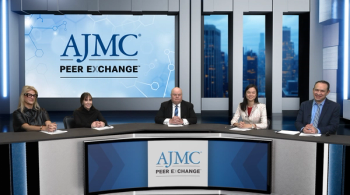
The REDUCE-IT Study and CV Risk
Matthew J. Budoff, MD, summarizes the design and outcomes of the REDUCE-IT trial of icosapent ethyl as hypertriglyceridemia treatment.
Transcript
Deepak L. Bhatt, MD, MPH: Let me turn now to Dr Budoff to give us a recap of the REDUCE-IT trial. You mentioned it, but can you talk a little about the inclusion and exclusion criteria and what the main results of the overall trial were? Also, can you comment on the US results? This is particularly appropriate since Dr Budoff was 1 of our leading US investigators on that study. Dr Budoff?
Matthew J. Budoff, MD: Thank you, Deepak. This was led by you, so please correct me as I go through this. This was a very important and very large trial taking patients with both primary prevention—those with diabetes and cardiovascular risk factors—as well as secondary prevention—those with established cardiovascular disease—and randomizing them to 4 g of icosapent ethyl or matching placebo. We enrolled over 8000 patients. Our 4.9-year follow-up resulted in a robust event reduction. There was a 25% reduction in the primary end point. Importantly, as you mentioned, in the US cohort, which was over 3000 participants, the event rates were reduced even greater. There was a 31% event reduction in that cohort, including all-cause mortality.
As we think about the implications of the REDUCE-IT trial on top of statin therapy, on top of good background therapy, by taking patients with triglycerides between 135 mg/dL up and 499 mg/dL—so, elevated triglycerides—we literally reduced events more robustly than we’ve seen with other add-on therapies. When we think about IMPROVE-IT, or FOURIER, or ODYSSEY OUTCOMES, these other LDL [low-density lipoprotein]–lowering algorithms lowered events by 6%, 15%, maybe even 20%. Here, we saw a 25%-to-30% event reduction on top of statin therapy. So we saw robust event reduction. No matter how you looked at the data, there was a very uniform benefit associated with the use of icosapent ethyl for this population.
Deepak L. Bhatt, MD, MPH: That’s a nice summary. The relative risk reduction for the primary end point was around 25%. For total ischemic events, depending on how that’s defined—not just the first but recurrent events—we saw anywhere from a 30% to 32% relative risk reduction there with large absolute risk reductions. This is perhaps a bit speculative, but what do you think are the mechanisms of action behind icosapent ethyl and its impact on reducing cardiovascular risk?
Matthew J. Budoff, MD: We’re still exploring that more. It’s clearly not just triglyceride lowering. Triglyceride lowering is actually fairly modest in these trials, and we’ve seen that from another trial with a similar molecule where we saw larger event reductions than triglyceride reduction. It’s multifactorial, but it does appear to have some mild effects on antiplatelets. We’ve seen a very mild but notable increase in bleeding risk. Very minimal, but that does show that it does have antiplatelet activity that might be beneficial here as well.
Overall, we just saw a very nice total event reduction, so it’s probably triglycerides. We know it has some effect on oxidation. Dr Preston Mason out of Harvard has shown some really nice biological effects on plaque stabilization and how that might affect the lipid bilayer and really prevent destabilization. There are a lot of potential effects here that are clearly beneficial, but the uniform benefit we’ve seen in every subgroup really reassures me that this is a robust adjunct to statins for our patients for long-term prevention.
Newsletter
Stay ahead of policy, cost, and value—subscribe to AJMC for expert insights at the intersection of clinical care and health economics.



























































